Discover the Magic of Solo Travel in Nepal: A Complete Guide
SOLO TRAVEL ASIA
6/4/202311 min read
Nepal is a fantastic destination for solo travelers, offering a unique blend of adventure, culture, and natural beauty. As mentioned in Magical Summits' blog post, you may be flying alone, but you will not be alone—Nepal is a popular solo travel destination. In this complete guide, we will explore why Nepal is a favorite solo travel destination, as well as provide travel tips, permits, equipment, and a list of popular treks.
Why is Nepal a favorite Solo travel destination?
Trekking:
Nepal is home to some of the world's most famous trekking routes, including the Everest Base Camp Trek, the Annapurna Circuit, and the Langtang Trek. These treks offer stunning views of the Himalayas, as well as the opportunity to experience the local culture and meet other travelers. As mentioned in Guy On The Road's blog post, all popular treks have a lively movement of people, and you will get to know travel partners easier. Although these are touristy treks, they do not detract from the charm of trekking in Nepal and the impressive Himalayan ridge. For those who travel alone in Nepal, especially for the first time, and intend to go on a trek alone, it is worthwhile to go on one of the most visited and famous treks. On these treks, you will surely get to know people and gain tremendous shared experiences.
Friendly People:
Nepali people are known for their warm and welcoming nature. They are proud of their traditions, religion, music, and culture, and have huge respect for visitors. As mentioned in A Little Adrift's blog post, the Nepali are incredibly friendly and fun, and they will love you for it if you learn a bit of Nepali. Nepali people are always smiling and ready to help visitors. They are happy to share their culture and traditions, and have a genuine interest in visitors. Nepali people are universally known to be some of the friendliest and most welcoming in the world.
Culture:
Nepal has a rich and diverse culture that is fascinating to explore. From the colorful prayer flags and intricate temples to the delicious food and lively festivals, there is always something new to discover. Nepal is a deeply spiritual country, with a rich history of Buddhism and Hinduism. It is home to several important spiritual sites, including the Boudhanath stupa, Swayambhunath temple, and Pashupatinath temple. Nepali people are proud of their culture and traditions, and are happy to share them with visitors. Nepali culture is deeply rooted in family and community, and visitors are often welcomed as part of the family.
Natural Beauty:
Nepal is home to some of the most beautiful landscapes in the world. From the towering Himalayas to the lush jungles of Chitwan National Park, there is no shortage of natural beauty to explore. Nepal is a mecca for outdoorsy type travelers because of the Himalayan mountains that offer up some of the best trekking opportunities in Asia. Nepal is one of the best destinations in the world for adventure travel, with challenging trekking routes, breathtaking glaciers, and picturesque valleys. Nepal is also home to several national parks, including Chitwan National Park and Sagarmatha National Park, which offer a chance to see rare and endangered wildlife.











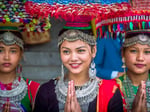










































Traveling in Nepal
Travel Tips
Permits:
Some trekking routes in Nepal require permits, so it's important to research and obtain the necessary permits before embarking on your trek.
Equipment:
Trekking in Nepal requires proper equipment, including sturdy hiking boots, warm clothing, and a good backpack. It's important to pack light and bring only the essentials.
Safety:
While Nepal is generally a safe destination for solo travelers, it's important to take precautions and be aware of your surroundings. It's also a good idea to let someone know your itinerary and check in regularly.
Popular Treks
Everest Base Camp Trek:
The Everest Base Camp trek is a popular trekking route in Nepal that takes trekkers through the heart of the Khumbu region, providing breathtaking views of the towering peaks, glaciers, and valleys. Here are some details on the Everest Base Camp trek:
Trip Duration
The Everest Base Camp trek is typically 12-16 days long, depending on the itinerary and the trekker's pace. [Travel Creators]
The trek covers a distance of approximately 130 km (80 miles) round-trip. [Switchback Travel]
The trek involves several steep ascents and descents, as well as high altitude, so it is important to take time to acclimatize properly. [Makalu Adventure]
Best Time to Trek
The best time to trek to Everest Base Camp is from March to May and from September to November, which are the two main trekking seasons in Nepal. During these months, the weather is generally clear and dry, with mild temperatures and good visibility. [Himalayan Glacier]
The monsoon season from June to August and the winter season from December to February are not recommended for trekking to Everest Base Camp due to the risk of landslides, avalanches, and poor visibility. [Mustang Trek Nepal]
Trek Highlights
The trek takes trekkers through the stunning Himalayan landscapes of Nepal, including the highest mountain peak in the world, Mount Everest, standing at 8,848 meters (29,029 feet). [Mustang Trek Nepal]
The trek passes through the land of the Sherpas, providing an opportunity to experience the local culture and traditions. [Switchback Travel]
The trek offers unique landscape, geographical diversity, spectacular scenarios, cultures, and lifestyles of world-famous climbing Sherpas. [Travel Creators]
The trek includes a visit to Everest Base Camp, located at an elevation of 5,364 meters (17,598 feet), where trekkers can see the climbers preparing for their ascent of Mount Everest. [National Geographic]
















Annapurna Circuit Trek:
The Annapurna Circuit Trek is a popular trekking route in Nepal that offers stunning views of the Annapurna mountain range. Here are some details on the Annapurna Circuit Trek:
Trip Duration
The Annapurna Circuit Trek is typically 14-21 days long, depending on the itinerary and the trekker's pace. [The Mountain Company]
The total length of the route varies between 160-230 km (100-145 miles), depending on where motor transportation is used and where the trek is ended. [Wikipedia]
The trek covers an elevation gain/loss of 10,107 meters (33,159 feet). [Wikipedia]
Best Time to Trek
The best time to trek the Annapurna Circuit is from March to May and from September to November, which are the two main trekking seasons in Nepal. During these months, the weather is generally clear and dry, with mild temperatures and good visibility. [Switchback Travel]
The Annapurna Circuit sits within a rain shadow, so it is possible to trek most parts of the circuit year-round, including the monsoon period. [Wikipedia]
Trek Highlights
The Annapurna Circuit Trek offers stunning views of the Annapurna mountain range, including Annapurna I (8,091 meters/26,545 feet), Annapurna II (7,937 meters/26,040 feet), and Annapurna III (7,555 meters/24,787 feet). [Discovery World Trekking]
The trek passes through several different river valleys, including the Marsyangdi River Valley and the Kali Gandaki River Valley, providing an opportunity to experience the local culture and traditions. [Switchback Travel]
The trek includes a crossing of the Thorong La Pass, which is the highest point on the trek at an elevation of 5,416 meters (17,769 feet). [Trekking Trail]
The Annapurna Circuit Trek offers a mix of wilderness and teahouse trekking, with several small communities and teahouses along the route. [Switchback Travel]
The Annapurna Circuit Trek is a challenging and rewarding trekking route that offers stunning views of the Annapurna mountain range, as well as an opportunity to experience the local culture and traditions. The trek is typically 14-21 days long and covers an elevation gain/loss of 10,107 meters (33,159 feet). The best time to trek the Annapurna Circuit is from March to May and from September to November, which are the two main trekking seasons in Nepal. The trek includes a crossing of the Thorong La Pass, which is the highest point on the trek at an elevation of 5,416 meters (17,769 feet).


















Langtang Trek:
The Langtang Trek is a short and moderate adventure that offers spectacular views of snow-capped mountains and a strong Tibetan influence. Here are some unique features of the Langtang Trek:
Trip Duration
The Langtang Trek is typically 7-9 days long, depending on the itinerary and the trekker's pace. [Journey Era]
The trek covers a distance of 77 km (48 miles) round-trip. [Journey Era]
The highest point on the trek is Kyanjin Ri (4,773 meters/15,659 feet) or Tserko Ri viewpoint (5,033 meters/16,512 feet). [Journey Era]
Best Time to Trek
The best time to trek the Langtang Trek is from March to May and from September to November, which are the two main trekking seasons in Nepal. During these months, the weather is generally clear and dry, with mild temperatures and good visibility. [Stingy Nomads]
The Langtang Trek is also possible during the winter months from December to February, but trekkers should be prepared for cold temperatures and snow. [Bookatrekking.com]
Trek Highlights
The Langtang Trek leads through the Langtang National Park and the Langtang Valley, providing an opportunity to experience the local culture and traditions. [Bookatrekking.com]
The trek offers stunning views of the Langtang mountain range, including Langtang Lirung (7,227 meters/23,711 feet) and Langtang II (6,581 meters/21,587 feet). [Nepal High Trek]
The trek includes a visit to Kyanjin Gompa, a Buddhist monastery located at an elevation of 3,870 meters (12,697 feet). [Journey Era]
The Langtang Trek is a shorter trek compared to other popular treks in Nepal, but it is still challenging due to the elevation gain and altitude. [Stingy Nomads]
The Langtang Trek is a challenging and rewarding trekking route that offers stunning views of the Langtang mountain range, as well as an opportunity to experience the local culture and traditions. The trek is typically 7-9 days long and covers a distance of 77 km (48 miles) round-trip. The best time to trek the Langtang Trek is from March to May and from September to November, which are the two main trekking seasons in Nepal. The trek includes a visit to Kyanjin Gompa, a Buddhist monastery located at an elevation of 3,870 meters (12,697 feet), and offers stunning views of the Langtang mountain range.
















Top Places to Visit in Nepal
Kathmandu, Lalitpur, Bhaktapur:
Kathmandu, Lalitpur, and Bhaktapur are among the top cities to visit in Nepal due to their rich cultural heritage, stunning architecture, and proximity to the Himalayas. These cities offer a unique blend of history, culture, and adventure, making them a must-visit destination for any traveler to Nepal.
Kathmandu, the capital city of Nepal, is the largest metropolis in Nepal and the gateway to tourism in Nepal. It has a rich history spanning nearly 2000 years, with historic temples and monasteries that belong to Hindus and Buddhists alike. The Kathmandu Valley includes the towns of Madhyapur, Lalitpur, and Thimi, which are integral to Kathmandu's cultural heritage, tourism industry, and economy. Kathmandu has the most advanced infrastructure of any urban area in Nepal, and its economy is focused on tourism, which accounted for 3.8% of Nepal's GDP in 1995–96.
Lalitpur, also known as Patan, is one of the three royal cities in the Kathmandu Valley and is renowned for its rich culture and traditional Newari architecture. Lalitpur is home to several UNESCO World Heritage Sites, including the Patan Durbar Square, which is a complex of palaces, temples, and courtyards. Lalitpur is also known for its traditional arts and crafts, including pottery, weaving, and metalwork.
Bhaktapur is another royal city in the Kathmandu Valley and is known for its well-preserved medieval architecture and rich cultural heritage. Bhaktapur is home to several UNESCO World Heritage Sites, including the Bhaktapur Durbar Square, which is a complex of palaces, temples, and courtyards. Bhaktapur is also known for its traditional arts and crafts, including pottery, weaving, and woodcarving.






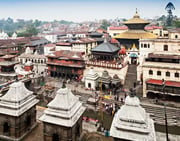











Pokhara:
Pokhara is a beautiful city in Nepal that is located about 120 miles (200 km) west of the capital city of Kathmandu. It sits at the foot of the Annapurna mountain range and is known for its stunning natural beauty, including mountain scenery, waterfalls, and a beautiful lake. Pokhara is a big tourist spot because it has the beautiful Phewa Tal Lake, great mountain scenery, and is the gateway to the most popular treks in Nepal. The city offers a range of activities and attractions, including hiking, paragliding, and mountain biking. Pokhara is also known for its laid-back vibe, making it a perfect destination for travelers looking to relax and enjoy the natural beauty of Nepal.












Chitwan National Park:
Chitwan National Park is the first national park of Nepal, established in 1973 as the Royal Chitwan National Park. It covers an area of 952.63 km2 (367.81 sq mi) and is located in the subtropical Inner Terai lowlands of south-central Nepal in the districts of Nawalpur, Parasi, Chitwan, and Makwanpur. The park is situated in the lowland of the Inner Terai and consists of tropical and subtropical forests. Sal forests cover 70 percent of the park, and grasslands cover 20 percent of the park. The park is home to a variety of flora and fauna, including some of the most threatened wild species of the world. The park is recognized as a World Heritage Site by UNESCO. Chitwan National Park serves as a prime destination for ecotourists visiting Nepal, and well-developed tourist facilities exist in the nearby settlements of Sauraha and Tharu. Vehicle and elephant safaris are popular activities in the park. The park is also home to several indigenous communities, including the Tharu people, who have lived in the area for centuries and have developed a unique culture and way of life.



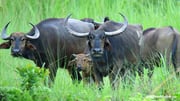








Local Foods You Must Try
Dal Bhat Set or Dhido Set:
Dal Bhat is a traditional Nepali dish that consists of lentil soup, rice, and vegetables. It is a staple food in Nepal and is often served with a side of pickles.
Dhido is a traditional Nepali dish that is prepared by bringing hot water to a boil in a pan and adding flour while continuously stirring the mix. It is a thick porridge or mush that is made by cooking stone-ground cornmeal, buckwheat, millet, or wheat. Dhido is a common cuisine prepared mostly during the fast and is considered to be healthy.
Momo:
Momo is a type of dumpling that is filled with meat or vegetables. It is a popular snack in Nepal and is often served with a spicy dipping sauce.
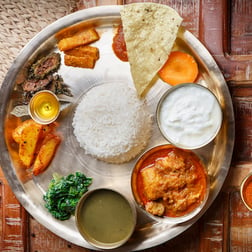
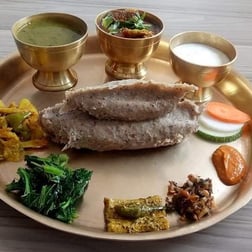
Thukpa:
Thukpa is a noodle soup that is made with vegetables, meat, or seafood. It is a popular dish in the Himalayan region of Nepal.
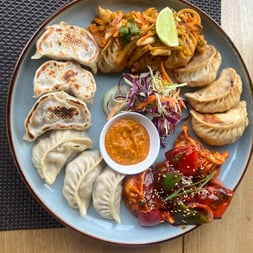
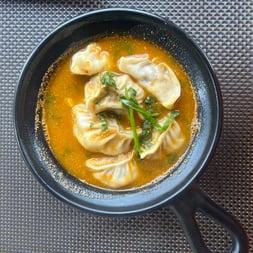


Newari Khaja Set:
Newari Khaja Set is a traditional Nepali food that usually consists of different items in it. It is a snack or light meal that is commonly eaten in Nepal. The set typically includes flattened rice (baji), beaten rice, boiled egg, fried black soybeans, roasted peanuts mixed with different spices, and fermented mustard leaves. The items are put together in a leaf bowl (bota) and served. Newari Khaja Set is a popular food in Nepal and is a must-try for anyone visiting the country.
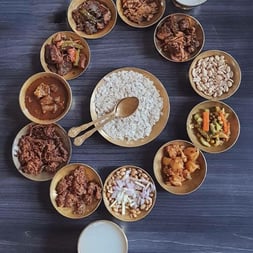
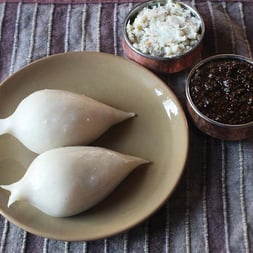
Juju Dhau:
Juju Dhau is a famous sweetened yogurt from Bhaktapur, a historical city located in the Kathmandu Valley of Nepal. It is also known as "King of Yogurt" or "King Curd." Juju Dhau is made with buffalo milk and is traditionally served in small clay pots. It has a creamy texture and a slightly sour taste that is balanced by the sweetness of the sugar. Juju Dhau is a popular dessert in Nepal and is often served during festivals and special occasions. It is also a must-try for anyone visiting the country.
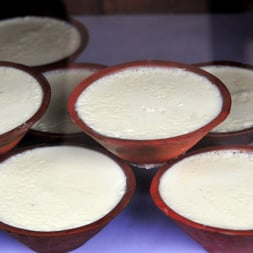
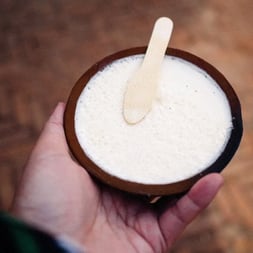
Exotic Nepali Adventures You Might Wanna Try
Paragliding (Pokhara):
Paragliding in Pokhara is an exhilarating adventure that offers breathtaking views of the stunning Himalayas, Phewa Lake, and the beautiful green landscape. It is an activity that allows you to fly like a bird and soar over the mountains and landscapes of Nepal. Tandem paragliding is available, and it is a must-try for anyone visiting Pokhara.
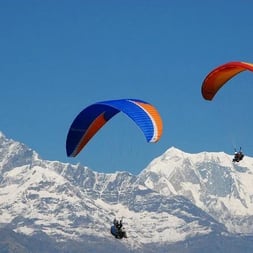
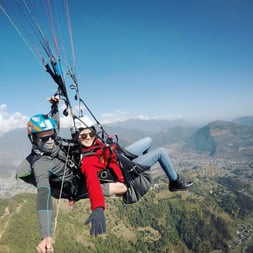
Bunjee Jumping (BhoteKoshi):
Bungee jumping is an adventure sport that involves jumping from a great height while being secured with a long rubber cord around your feet or body. The launching pad is usually erected on a tall structure such as a building, crane, or bridge across a deep ravine. Bungee jumping is a popular activity in Nepal, and the country's first bungee jumping site is located at Bhote Koshi River, close to the Nepal-Tibet border. The jump is 160 meters over the river and offers breathtaking views of the surrounding landscape.
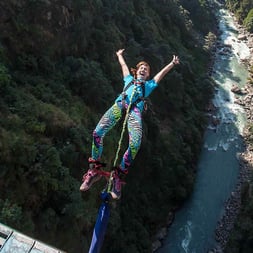
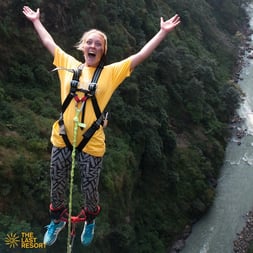
Mountain Biking:
Mountain biking in Nepal is an exciting adventure that offers breathtaking views of the country's stunning landscapes, mountain vistas, and beautiful valleys. Nepal's diverse terrain is a mountain biker's dream come true, with wild and challenging trails that traverse through some of the most stunning scenery and cultural landscapes in the world. Here are some of the best mountain biking trails in Nepal:
Upper Mustang Mountain Biking Tour
Annapurna Circuit Mountain Biking Trip
Kathmandu Valley Mountain Biking
Mountain biking is an environmentally sound way of exploring Nepal's magnificent terrain, and it is a must-try for anyone visiting the country.


Nepal is a country that offers a plethora of thrilling adventure activities and experiences that are sure to create unforgettable memories. From trekking and mountaineering to bungee jumping, paragliding, and white water rafting, Nepal has something for everyone. Adrenaline-pumping mountain biking trails, wildlife safaris, canyoning, and jungle walking are just a few of the other exciting activities that Nepal has to offer. The country is a haven for adventure lovers, with a variety of sports such as rock climbing, ice climbing, peak climbing, and mountaineering. These are only a few of the many experiences that Nepal has to offer, and the possibilities are endless. Make your own traveling experience visiting Nepal and explore the beauty of this country.
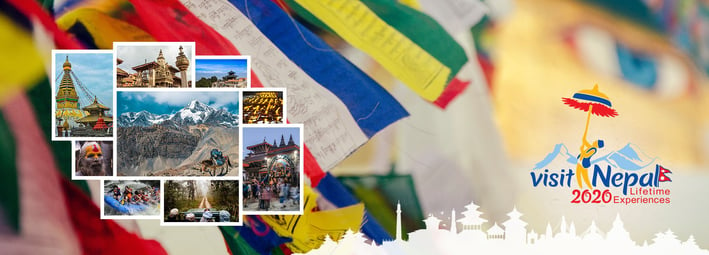

Youtube Videos on Exploring Nepal



